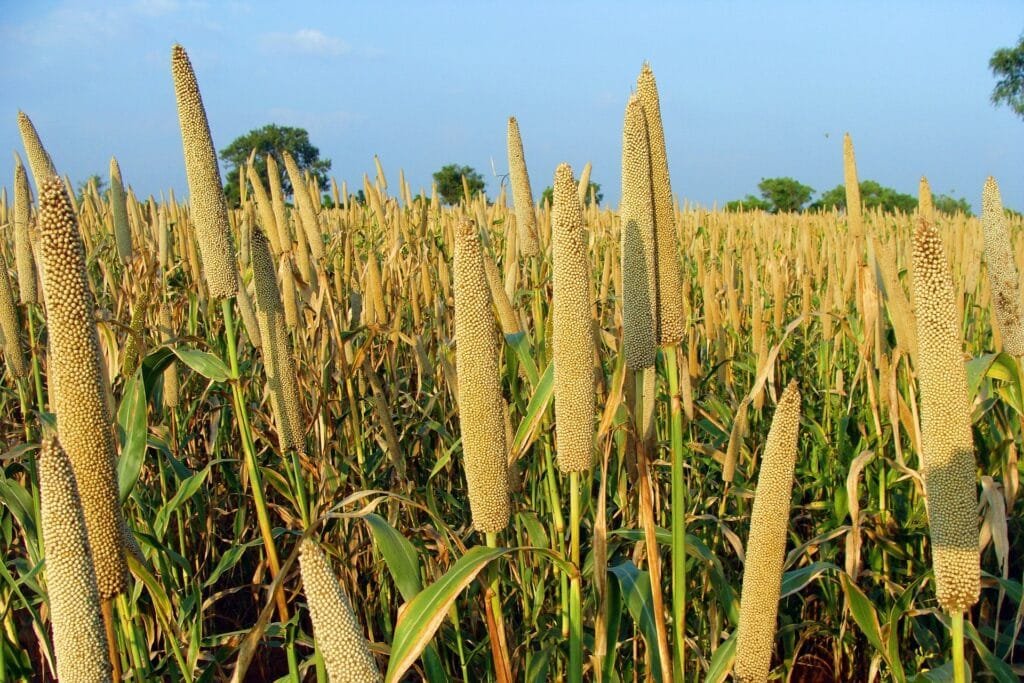
Millets are a highly varied group of small-seeded grasses, widely grown around the world as cereal crops or grains for fodder and human food. As recent years have paved the way for many new diseases, mankind has started moving towards being fit and healthy. A key component of health and development is nutrition. Among various measures adopted for this purpose, dietary changes play a vital role. These altered dietary practices have incorporated the use of millet into our diet by highlighting its nutritional richness and health benefits.
Understanding Millets: An Ancient Grain for Modern Health
Millets have been cultivated and consumed for thousands of years. In the Indian subcontinent, the use of millets dates back to ancient times, with Ayurveda recognizing their importance. Ayurveda, giving immense importance to the diet of both healthy and diseased, has explained these millets in detail under Dhanya Varga (category of cereals).
Types of Millets
Millets are categorized into major and minor types:
Major Millets:
- Pearl millet
- Finger millet
Minor Millets:
- Foxtail millet
- Proso millet
- Little millet
- Kodo millet
- Barnyard millet
Ayurvedic Perspective on Millets
Ayurveda explains millets in detail under Dhanya Varga. Millets have been given many synonyms like, Kudhanya (Inferior among cereals), Kshudra Dhanya (small sized cereals), and Trina Dhanya (grass derived cereals). The general qualities and effects of millets according to Ayurveda are:
Rasapanchaka of Millets (Properties of millets):
- Rasa (Taste): Kashaya-Madhura (Astringent-Sweet)
- Vipaka (Post-digestive taste): Katu (Pungent)
- Veerya (Potency): Sheeta (Cooling)
- Guna (Quality): Laghu (Light), Ruksha (Dry)
- Karma (Action): Lekhana (Scraping), Vrishya (Aphrodisiac), Kledashoshana (Drying up excessive moisture), Baddhamalakara (Constipating)
Effect on Tridosha & Dhatu:
- Kapha-Pittahara (Pacifies Kapha and Pitta doshas)
- Vatala (Aggravates Vata)
- Rakta Shamaka (Pacifies blood)
Specific Millets and Their Properties
- Foxtail Millet (Setaria italica): Heavy for digestion, absorbs excessive fluids, nourishes body tissues, dries up excessive moisture, promotes fracture healing, and is an aphrodisiac.
- Barnyard Millet (Echinochloa frumentacea): Absorbs excessive fluids, dries up body tissues.
- Kodo Millet (Paspalum scrobiculatum): Sweet-bitter in taste, heavy for digestion, absorbs excessive fluids, anti-poisonous, best diet in wounds and ulcers.
- Proso Millet (Panicum miliaceum): Heavy and difficult for digestion, nourishes body tissues, promotes fracture healing.
- Finger Millet (Eleusine coracana): Bitter-sweet-astringent in taste, cold in potency, unctuous, promotes strength, and is an aphrodisiac.
- Adlay Millet (Coix lachryma jobi): Pungent-sweet in taste, emaciating, pacifies Kapha Dosha.
- Sorghum (Sorghum vulgare): Anti-aphrodisiac, enhances taste perception, pacifies excessive thirst, pacifies excessive moisture content.
Choosing and Using Millets Wisely
Analysing the general qualities and effects of millets gives an obvious idea that millets are best advised in Kaphaja Roga (diseases due to Kapha), Pittaja Roga (diseases due to Pitta), and Raktadushti (vitiation of blood). It is always necessary to avoid the use of millets in Vataja Roga (diseases due to Vata) as it aggravates the condition.
Potential Drawbacks of Millets
Despite their multiple health benefits, millets contain antinutrients — compounds that block or reduce our body’s absorption of other nutrients and may lead to deficiencies. One of these compounds — phytic acid — interferes with potassium, calcium, iron, zinc, and magnesium uptake. Additionally, goitrogens in millets can cause sluggishness and enlargement of the thyroid, making them unsuitable for individuals with hypothyroidism.

Who Should Consume Millets?
Advising millets according to an individual’s Agni Bala (digestive capacity) is essential as they are heavy and dry, making them difficult to digest. However, their high dietary fiber and protein content provide satiety for a long time. They have scraping and drying actions which are useful in treating diseases due to over nourishment of tissues.
Considerations Before Consuming Millets:
- Check if it is a staple for you.
- Monitor for any immediate metabolic complications.
- Ensure it suits your body Dosha:
- Heating Millets (Foxtail, Bajra, Barnyard): Ideal for winter or Kapha imbalance.
- Cooling Millets (Little, Proso): Suitable for summer or Pitta imbalance.
While millet has been declared a superfood for health and nutrition, it is important to double-check whether it suits your body, providing you with the right kind of energy and nutrition. If you are planning to switch to millets due to gluten concerns, consult with your doctor or nutritionist. For those struggling with hypothyroidism, it is advisable to avoid millet consumption.
Learn more about why millet is to be avoided in thyroid dysfunction here.
